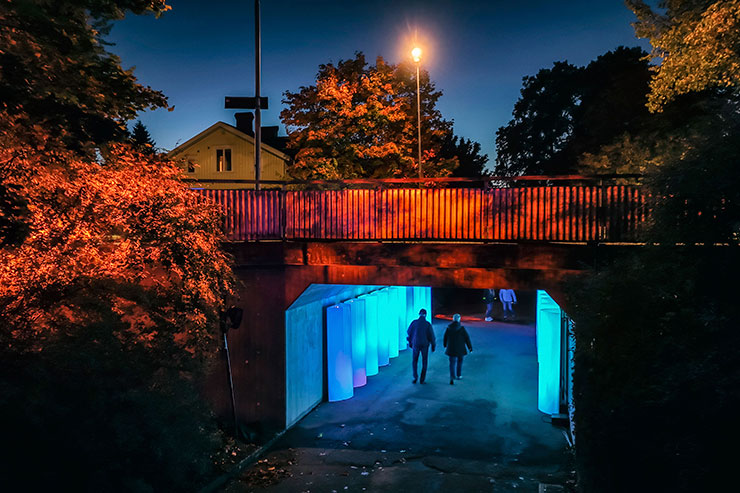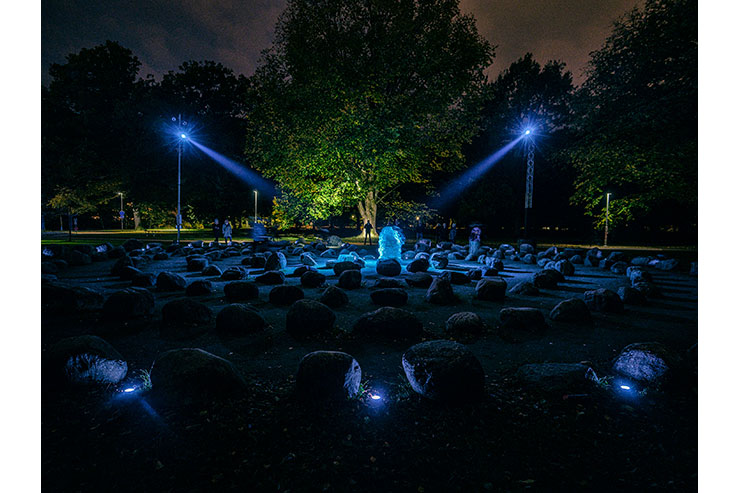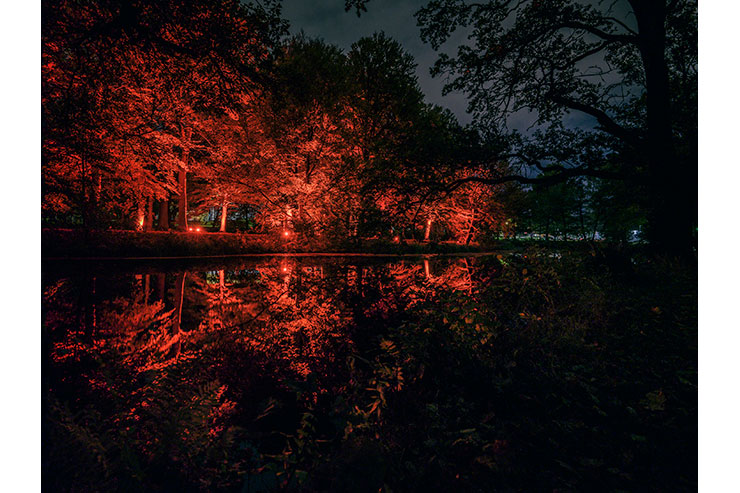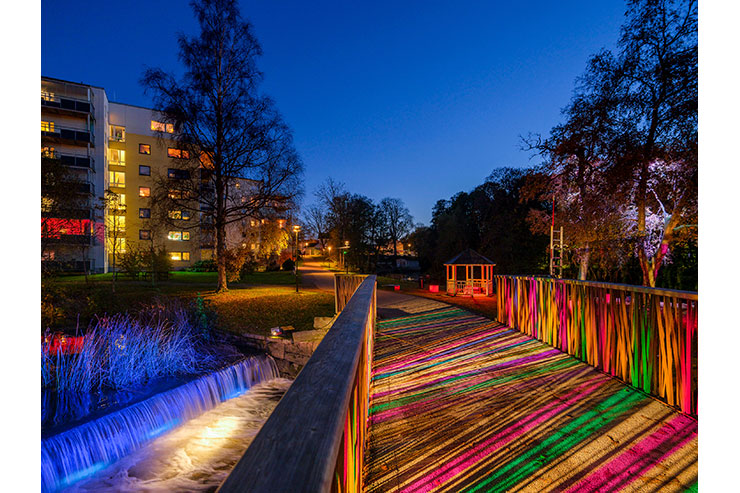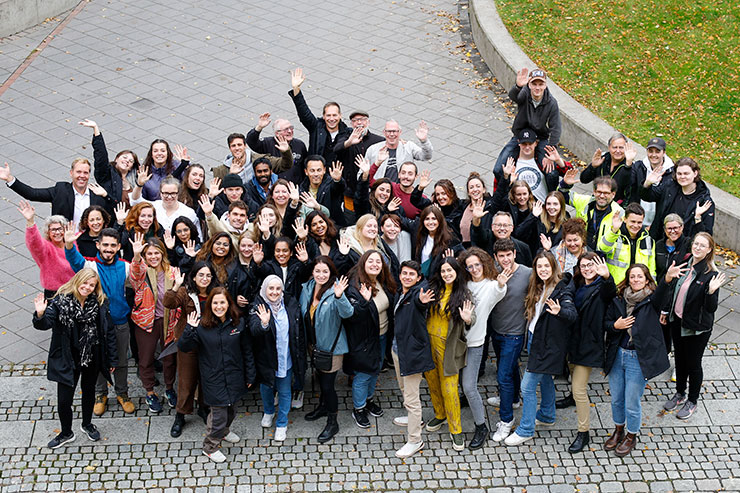This website uses cookies so that we can provide you with the best user experience possible. Cookie information is stored in your browser and performs functions such as recognising you when you return to our website and helping our team to understand which sections of the website you find most interesting and useful.
Lights in Alingsås 2022, Sweden
EventLights in Alingsås 2022LocationAlingsås, SwedenOrganiserAlingsås EnergiMain PartnersMeike Goessling; Jonathan Plumpton, Principal of Jonathan Plumpton Lighting Deisgn; Kay Flounders, Senior Architectural Lighting Designer at WSP; Martina Alagna, Marketing and Business Development Manager at Linea Light Group; Berry van Egten and Ellen Goulmy of BXLD and the Lighting Design Academy in the Netherlands; and Michela Bonzi and Jörg Frank Seemann, Lighting Design Partners at LucespazioMain SponsorsCariitti, Color Kinetics, Control Dept, eCue, Effekljus, Fergin, Filix, Fox Belysning, Griven, iGuzzini, Luxlight, Martin/Harman, Meyer, Philips Hue, Roblight, SGM, Signify, Stockholm Lighting, and Traxon
Returning for its 23rd edition, the 2022 Lights in Alingsås festival took place from 30 September to 6 November, bringing students and senior lighting professionals together in a celebration of light.
The theme for the 2022 edition was Only One Earth. 7.9 Billion Reflections. According to organisers, “Reflections is a word that symbolises the very origin of change. When light is reflected, it spreads, and even changes course. Just like when we reflect on a thought and that thought generates new ideas, dreams, and insights. This year, Lights in Alingsås wanted to illuminate the endless possibilities encapsulated in the reflections of 7.9 billion people”.
Six installations were crafted for this year’s event, each created by teams of lighting design students and orchestrated by prominent lighting designers who acted as workshop heads.
These workshop heads worked with lighting design students from KTH Stockholm and JTH Jönköping, and electrical engineering students from Alströmergymnasiet i Alingsås on sites across the town of Alingsås.
Site One, the pedestrian tunnel, was led by Kay Flounders, whose team created an installation called Embrace the Elements. Here, the design team was inspired by “the interplay of the four elements – earth, water, wind, and fire, as they prepare the way for the fifth element, human life”. By using an interplay of colours and materials, the artists sought to get passers-by in the tunnel to slow down and enjoy the embrace of light and colour, in a literal sense, as visitors were encouraged to give the series of light tubes within the tunnel a hug, to embrace the tunnel.
The second site, led by Meike Goessling, was entitled Are You In or Out? Here, the design team created an experiential labyrinth for viewers to see the piece from a distance, close up and from the inside. Created “to remind us just how fragile Earth is, of the seriousness of climate change and that we must work hard on sustainability”, the visitor was invited to enter the labyrinth to see how stones, which looked normal from a distance, turned into gems. The centre of the labyrinth conveyed a feeling of melting glaciers; the effect of shadows caused the place to be perceived differently from different viewpoints.
The journey began on the bridge, which was seen as a transitional space that encouraged viewers to slow down, allowing their eyes to adapt to the scene. Here, they started acknowledging the sounds and lights, both close and afar. The bridge was washed in a cool white light, while a cracking sound brought to mind the image of cracking ice.
Site Three, the island, was led by Berry van Egten and Ellen Goulmy, whose installation, Aura, was inspired by the energy fields around us that make us who we are. “The storyline of this site is about how the auras of the people travel around the island towards the tree of life, demonstrated by a two-minute light show”, the design team said.
For Site Four, Nolhaga Mountain, Jörg Frank Seemann and Michela Bonzi were inspired by the Joseph Campbell book, The Hero with a Thousand Faces for their installation, entitled The Hero’s Journey. “Change is what 7.9 billion people have in common. Without change, we’ll get nowhere. We all have a desire to discover and experience new things,” said the design team. The installation was structured as a journey through life in four stages – the hero’s birth, their assignment or task, followed by conflict, and finally victory. The scenario was depicted by a spectacular light show on the rock wall as visitors moved through the site.
At the Plantaget pedestrian bridge, Site Five, Martina Alagna’s team created an installation called Under a New Light. On a beautiful location used by many Alingsås residents every day, the four-minute trail encouraged visitors to slow down and experience a quiet, yet playful journey through nature. The design group worked with shapes, patterns, light and movement with the goal of catching the transition of nature itself, with the cycle of elements as an inspiration. The installation also aimed to change the perception of the space with the help of reflections and colours, using light to create four different “stages”. Firstly mimicking rain to create a feeling of calmness, the colours of the rainbow appeared afterwards to symbolise a new start. From here came a new light, to demonstrate how life can “sometimes be unexpected and take you by surprise”. Finally, to symbolise transition, came the feeling of moving on.
The final site, incorporating a residential area and the Lugnet pedestrian bridge, was led by Jonathan Plumpton, resulting in the installation Lugnachill. At this site, the theme was around reflections of nature, as shown by reflective strips that were applied to the bridge. A nearby waterfall was illuminated to resemble falling raindrops, which was further emphasised by the rainy weather. As visitors paused on the bridge they could hear the water, feel the wind, and appreciate the colour, the texture and connection to the reeds, the shadows and reflections. Beyond the bridge, a small octagonal gazebo offered the opportunity to gather as a community, share experiences and have fun. Lighting was integrated here to create a warm focal point, alluding to the natural desire to gather around a fire, chat with a friend, or get to know someone new, while a disco ball in the ceiling was lit with warm, autumnal colours.

